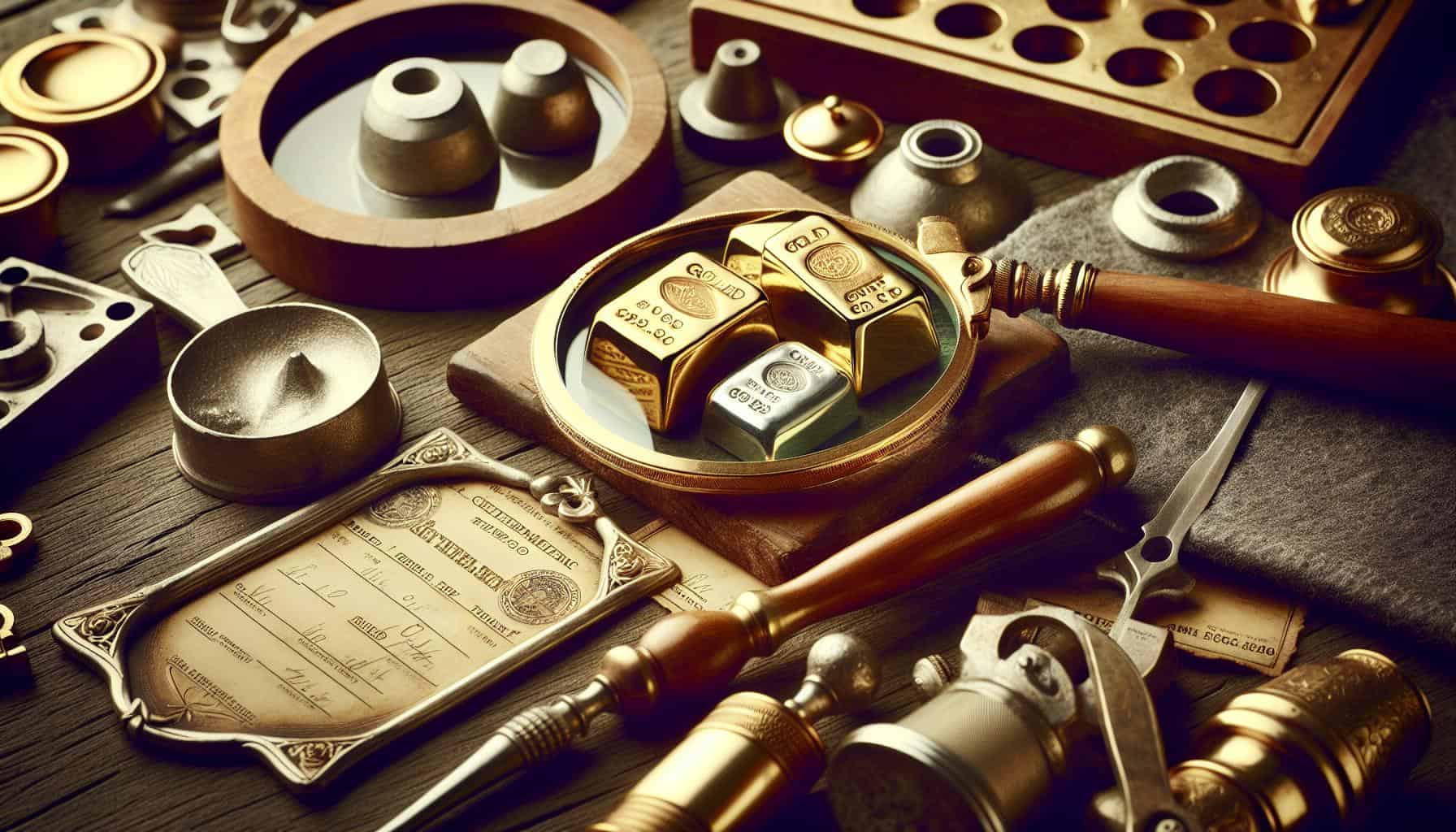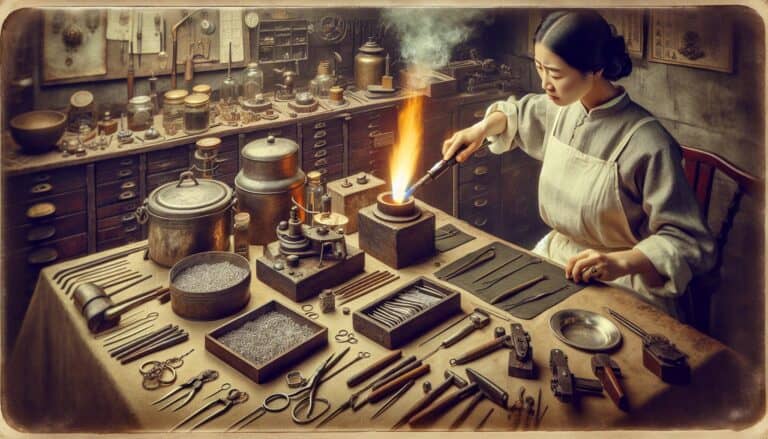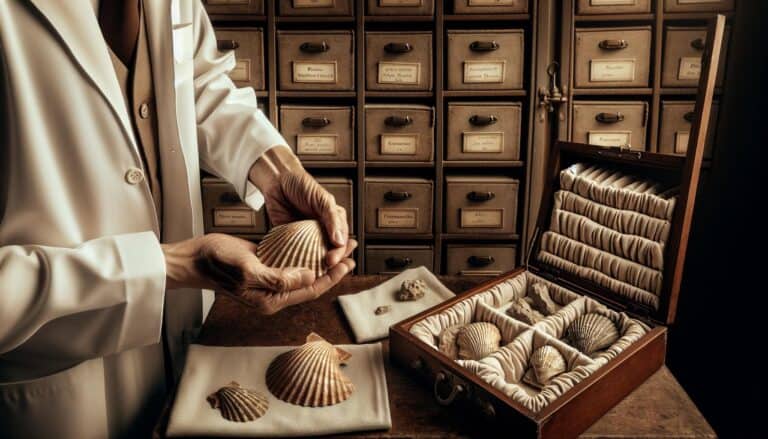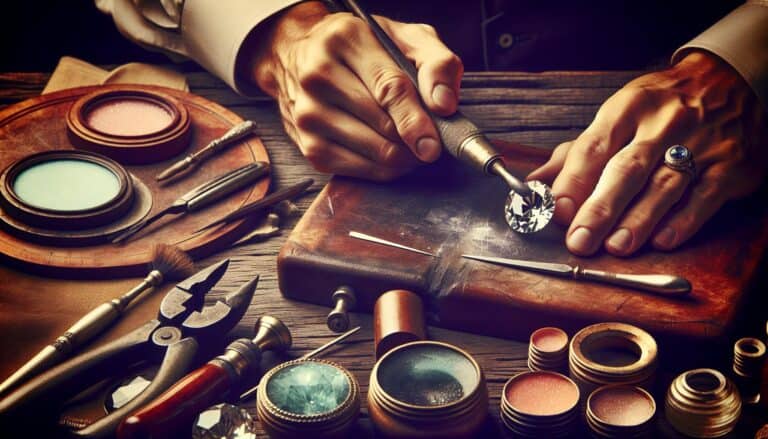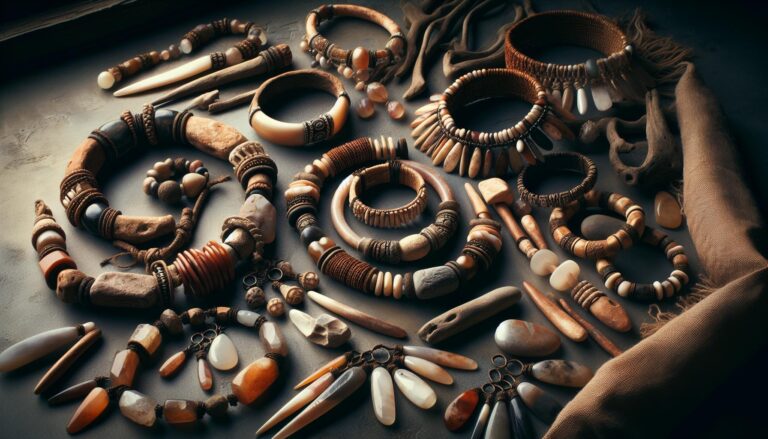Embarking on your jewelry-making journey, you’ll soon discover that sourcing the right metals is a craft in itself.
Whether you’re a budding designer or a seasoned artisan, the metals you choose are the foundation of your creations.
You’re not alone in seeking sustainable, cost-effective, and high-quality options. Navigating the maze of suppliers, metal types, and pricing can be daunting, but with the right know-how, you’ll be selecting the perfect materials in no time.
Let’s dive into the shimmering world of metals and uncover the secrets to sourcing the best for your jewelry projects.
From precious to base metals, you’ll learn how to strike the perfect balance between quality and affordability.
Sourcing metals for jewelry involves selecting the right type, quality, and supplier. Gold and silver are premium but costly, while stainless steel and aluminum offer durability and affordability. Consider purity, hypoallergenic properties, and tarnish resistance. Research suppliers for ethical sourcing and compare prices, keeping quality and sustainability in mind for beautiful, responsible creations.
Types of Metals for Jewelry Making
When you’re delving into the world of jewelry making, knowing your metals is crucial. Each metal carries its own unique properties, making some ideal for fine, delicate pieces and others better for durable, everyday wear.
Gold is a classic choice, prized for its luxurious appearance and workability. It’s often alloyed with other metals like copper or silver to enhance its strength. Sterling Silver is another favorite. It provides a perfect balance between malleability and durability, plus it offers that coveted bright, white sheen at a more affordable price point.
Moving on to more budget-friendly options, Stainless Steel is a powerhouse when it comes to toughness. It’s highly resistant to rust and tarnishing, which makes for long-lasting jewelry that can withstand the rigors of daily wear. Aluminum, on the other hand, is lightweight and highly malleable, ideal for larger, statement pieces that won’t weigh you down.
For those with an eye on sustainability, Recycled Metals are gaining popularity. They offer the same quality and aesthetic as virgin metals but come with a significantly reduced environmental footprint. Metals like recycled silver and gold can be sourced from certified suppliers, ensuring that your creations are both beautiful and eco-conscious.
Don’t forget about Copper, with its distinctive reddish hue, that brings warmth to any piece. It’s also known for its antimicrobial properties and affordability, making it an attractive option for a broad array of designs.
Here’s a quick reference for the properties and uses of popular metals in jewelry making:
| Metal | Properties | Common Uses |
|---|---|---|
| Gold | Luxurious, Malleable, Tarnish-resistant | Fine Jewelry |
| Sterling Silver | Durable, Bright Sheen, Affordable | Everyday Wear, Artisan Pieces |
| Stainless Steel | Tough, Rust-resistant | Bracelets, Watches |
| Aluminum | Lightweight, Malleable | Statement Jewelry |
| Recycled Metals | Sustainable, Quality Equivalent to Virgin Metals | Eco-friendly Designs |
| Copper | Warm Hue, Antimicrobial, Affordable | Fashion Accessories |
Determining the Specifications of the Metals You Need
Before diving into the procurement of metals for your jewelry projects, it’s essential to pinpoint the precise specifications you require. The properties of metals can vary significantly, impacting their suitability for different jewelry designs.
Purity is a crucial factor, especially in metals like gold and silver. Jewelry-grade materials often come in various grades, and knowing the karat or silver percentage is vital. Generally, a higher karat or purity level signifies a softer metal, which may be perfect for intricate designs but less ideal for items that need to withstand regular wear and tear.
Tarnish resistance is another aspect you’ll want to consider. Metals like sterling silver can tarnish over time and may require regular maintenance, whereas others, such as stainless steel, boast a resistance that lends to long-lasting luster without the need for frequent polishing.
When it comes to weight, metals like aluminum offer a lightweight option for larger, bolder pieces without the discomfort that heavier metals might bring. For those with sensitive skin, hypoallergenic options such as platinum and certain grades of stainless steel can make all the difference in customer satisfaction.
Here are a few specifications to keep in mind:
- Purity levels (e.g., karat for gold, sterling percentage)
- Tarnish resistance
- Weight and comfort
- Hypoallergenic properties
Metal hardness is yet another specification you can’t afford to overlook. This characteristic determines how well the metal will hold up to scratching and bending. Mohs scale of mineral hardness can be a useful reference when assessing the durability of your chosen metals.
Environmental impact and sustainability have become increasingly important to consumers. Opting for recycled metals not only demonstrates your brand’s commitment to eco-friendliness but also appeals to eco-conscious buyers looking for sustainable jewelry options.
By carefully assessing these factors, you can ensure that your chosen metals align with both your creative vision and your clients’ needs. Always keep in mind the end use of your jewelry pieces and choose metals that will enhance both their aesthetic appeal and functional longevity.
Researching and Identifying Suppliers
Once you’ve pinned down the types of metals that align with your vision and client needs, identifying reliable suppliers is the next critical step. Start by listing potential sources, which could include local metal dealers, online wholesalers, and artisan communities. Research each supplier’s reputation by reading reviews and checking ratings on platforms like the Better Business Bureau. Also, consider reaching out to fellow jewelry makers for personal recommendations, as they can provide invaluable insights into their experiences with suppliers.
When assessing suppliers, pay close attention to their product range and ability to provide the specific metal specifications you require. Are their metals ethically sourced? Do they offer recycled options? Dealers that prioritize sustainability may align better with your brand, especially if you’re promoting eco-friendly practices. Ensure that the supplier’s sourcing and refining processes meet industry standards.
Pricing is also a key factor to scrutinize. Request quotes from different suppliers and compare costs. While budget-friendly options are tempting, they shouldn’t come at the expense of quality. Investigate if suppliers offer discounts for bulk purchases or have loyalty programs that could benefit long-term collaborations.
Lastly, consider the logistics—shipping times, return policies, and customer service quality. Suppliers that operate with high efficiency and clear communication channels will save you time and potentially avoid frustration down the line.
By thoroughly vetting suppliers, you’ll forge partnerships that support the standards and integrity of your jewelry making practice. Doing so ensures a steady supply of high-quality metals, allowing you to focus on crafting exquisite pieces that resonate with your clientele.
Evaluating the Quality of Metals
When you’re sourcing metals for your jewelry projects, understanding the quality of the materials you’re purchasing is paramount. Not all metals are created equal, and metal quality can dramatically affect your finished piece’s appearance and durability. To assess the quality of metals you’re considering, you’ll want to look for several key indicators.
Know Your Alloys
Many metals used in jewelry making are actually alloys, which are metals combined with other elements to enhance their properties. For example, sterling silver is an alloy containing 92.5% silver and 7.5% other metals, usually copper. As you evaluate your options, be aware of the alloy ratios as they dictate the metal’s color, weight, and strength.
- Silver should be marked as ‘925’ to indicate sterling quality
- Gold is rated in karats, with 24K being pure gold
- Look for ‘nickel free’ on labels to avoid potential allergies
Check for Certification
Certification is a trustworthy method to verify you’re getting what you pay for. Reputable suppliers will often offer certified metals that have been assessed for quality and purity by professional bodies. These certificates protect you from counterfeit materials and confirm the ethical sourcing of metals.
- Ensure certificates match the product descriptions
- Check for stamps of certification on the metals
Test Metal Purity
You’ve got some tools at your disposal to test metal purity. A magnet can rule out certain non-precious metals as silver and gold are non-magnetic. Acid testing kits are more precise, though they may slightly damage the metals. Resistivity testing, performed by some suppliers, is non-destructive and incredibly accurate.
| Testing Method | Function | Notes |
|---|---|---|
| Magnet Test | Identifies ferrous (magnetic) metals | Non-destructive |
| Acid Test | Assesses metal purity | May leave slight mark |
| Resistivity | Measures electrical resistance | Non-destructive and accurate |
Monitor Metal Prices
Finally, keeping an eye on market prices for metals can give you insight into quality fluctuations. Precious metals are commodities, and their prices can reflect changes in quality and availability. If prices are unusually low, it might be an indicator of substandard or diluted materials. It’s important to stay informed of current trends to make knowledgeable purchases.
Comparing Prices and Cost-effectiveness
When exploring different vendors for your jewelry-making needs, it’s crucial to compare prices meticulously. Metal prices can vary significantly due to factors like market fluctuations, geopolitical events, and availability. By keeping a pulse on these changes, you’ll be able to make more informed purchases that align with your budget.
Assessing cost-effectiveness isn’t just about finding the lowest price per ounce or gram—it’s about ensuring value for your money. Often, opting for slightly more expensive options that offer higher quality or better certification can be more cost-effective in the long run. Consider the longevity and look these higher-grade metals can give your jewelry which could translate into premium pricing for your finished products.
To aid in comparing prices, here are essential strategies:
- Subscribe to industry newsletters: Stay updated with the latest metal prices.
- Utilize price charts and historical data: Understand past market trends.
- Connect with supplier networks: Gain insights into bulk purchasing deals.
- Factor in shipping and handling costs: These can add up and affect your overall costs.
Additionally, while staying updated with market prices, remember to check if suppliers offer discounts for bulk orders or repeat business. Such discounts can have a substantial impact on cost efficiency. Let’s look at an example of how costs can differ based on bulk purchasing:
| Quantity | Price per ounce | Total cost |
|---|---|---|
| 10 oz | $30 | $300 |
| 50 oz | $28 | $1,400 |
| 100 oz | $26 | $2,600 |
The table above demonstrates that purchasing in larger quantities often results in a more favorable price per ounce. Nonetheless, it’s essential to be wary of the cash flow implications of bulk buying and only purchase what you can realistically use to avoid overstocking.
With these considerations and strategies, you’ll be better positioned to source metals that don’t just satisfy your creative requirements, but also your business savvy. Remember, strategic buying is as much a part of jewelry making as the craftsmanship itself.
Conclusion: Finding Jewelery Metals
Mastering the art of sourcing metals is crucial to your success in jewelry making. You’ve learned to evaluate quality, understand alloys, and ensure ethical procurement.
Remember, strategic buying isn’t just about the lowest price—it’s about value. Weigh the benefits of quality and certification against cost, and don’t overlook the impact of bulk discounts and shipping fees on your bottom line. By staying informed and making smart choices, you’ll craft pieces that are not only beautiful but also reflect your commitment to excellence and sustainability.
Keep these tips in mind and you’ll be well on your way to sourcing the best metals for your jewelry creations.

